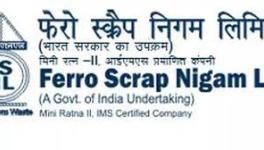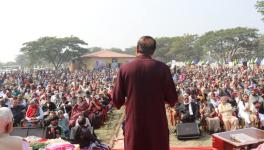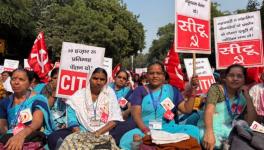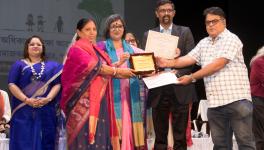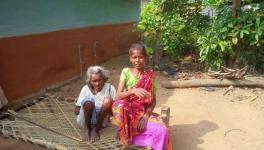GROUND REPORT: Workers at ECL’s Kalidaspur Coal Mine Breathe and Eat Black Dust
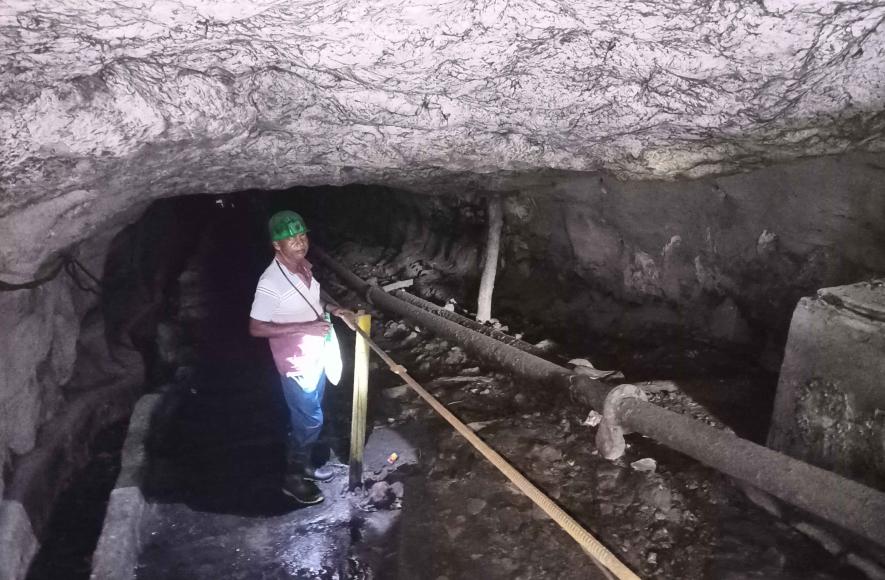
E C L’s Kalidaspur Coal workers going down the incline mine for extraction.
A 2-kilometre walk down slippery stairs into the incline of a coal mine of Eastern Coalfields Limited’s (ECL) Mejia Kalidaspur is enough to give a glimpse into the pathetic condition of workers there.
After coal is extracted following an intense explosion in the deep mine, thick black dust can be seen flying. The workers are covered in black dust. Some cannot breathe properly. There is enough water, but this water cannot be sprinkled with pipes to stop the dust because the spray machine is not working. On the other side, there is no ventilation facility. Despite difficult breathing, workers have to stay inside the pit for several hours till they finish their work.
After leaving the mine, the rest house-cum-attendance room looks unfit for living. The walls are cracked in multiple places. The roof is also broken, threatening to collapse any time. Several coal workers, therefore, rest in an abandoned house, surrounded by garbage and bushes. There is a lavatory in front of the rest house, but its door is broken, and there is no water supply inside.
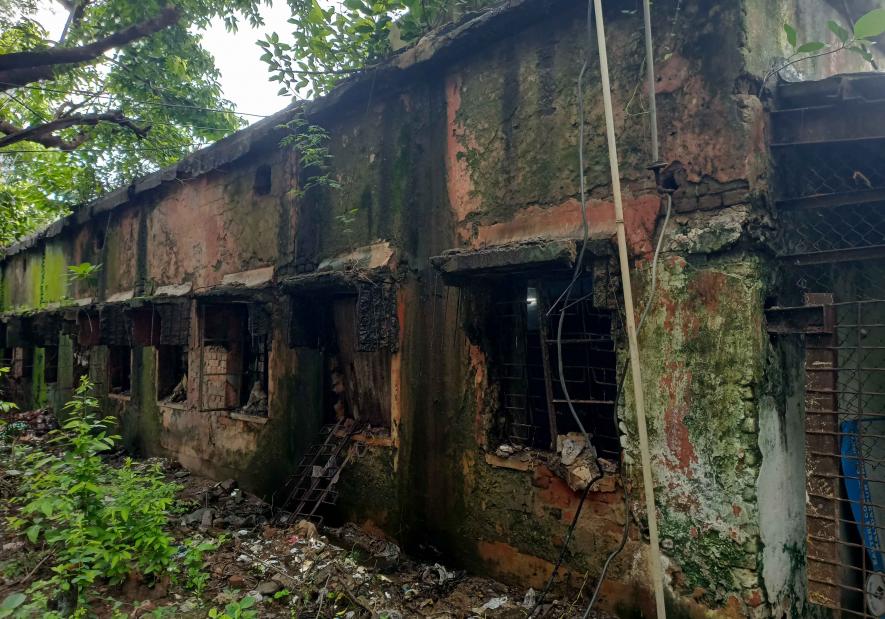
Rest-cum-attendance room of workers of Kalidaspur coal mine
Several workers of the Kalidaspur coal mine alleged that the authorities were aware of the workers' grievances, but remained silent.
After the Geological Survey of India recommended it, ECL started work on this coal mine at Kalidaspur of Mejia Block in Bankura district on the southern bank of Damodar River in 1980. It is near the coal mine area of Raniganj and lies at a distance of 205 kilometres from West Bengal’s capital, Kolkata.
When it started, the mine was spread over an area of 400 acres. This included many villages, including Bhara, Kalidaspur, Kalikapur, Shalchur, Gopal Nagar, Rangadanga Mohona, Jorsa, and Teghoriya. At that time, these places were uninhabited. There was some agricultural land, and a large part was vacant. A portion of the land was given to the landless poor as patta (permanent settlement of government land) by the then Left Front government, and the rest was government land.
SK Ilias, a resident of the nearby Lalbazar village and a Centre of Indian Trade Union (CITU) leader in Kalidaspur, told this reporter that later all the land was handed over to ECL, which bought it at the then market rate. One member of the pattadar family got a job in the coal mine, apart from the land compensation. He said at that time, the government, local panchayat, and block administration cooperated with ECL in all aspects, from making roads to other things.
Arun Mukerhjee, an Indian National Trade Union Congress (INTUC) leader in this coal mine, agreed with Ilias. Amiya Ray, a worker who retired three years ago, told this writer that after the opening of the coal mine, the workers also helped the management on various issues. Though multiple times, the workers held protests with their demands, but they also had a good relationship with the authorities.
Several workers in the area told this writer that the situation changed after the Trinamool Congress came to power in 2011. It appears now that the management is trying to satisfy the ruling party (TMC) leaders and workers, and coal mine workers are being neglected. How is the Kalidaspur coal mine doing in this situation?
Workers risk lives to go down the mine
Work in the mine is done in three daily shifts (8 am – 4 pm, 4 pm - 12 am, and 12 am – 8 am). They work six days a week. About 100 workers work on each shift. At least 30 workers work in each section where the coal is extracted and razed. At 8 am, the first shift of the day collects the lamps and helmets from the dilapidated rest-cum-attendance room, and enters number 2 incline mine. This reporter went down with the workers. There were slippery stairs covered with thick moss. The height of the roof from the stairs was about 7 feet. A little bit of carelessness can lead to an accident on the way down.
Every worker carries a water bottle in their side bags because there is no provision for drinking water inside the mine. Through the pitch dark mine, the workers can be seen moving forward with hand flashlights. There is pin-drop silence. We reached section 42 after walking more than 2km.
Thereafter holes were first drilled in the marked wall by the surveyor, after which explosives were inserted into each hole. These were then detonated from a distance of about 90 feet. The dark mine shook with a loud noise. Big chunks of coal burst out after the blasting. The horror cannot be fathomed without seeing it. Thick black coal dust engulfed the entire area. There was no ventilation system in section 42, where workers could not breathe properly. There was a lot of water, but they could not spray it on the coal through the pipes because the spraying machine was not working.
As per the coal mining rules, water must be applied to coal chunks after blasting to stop the flying dust. Here, the workers have to breathe in the poisonous coal dust. After the dust subsides a little, the coal is lifted by a Site Discharge Loading (SDL) machine into the tub car, which is taken to the field above the mine.
On our way back, workers Hormuz Ansari, MD Kutubuddin, Manad Saren, Biswanath Mishra, and Bijoy Das told this writer, "You saw the risks we take to work here. We requested the management to arrange ventilation and repair the water supply spray machine several times. We have to work at the risk of our lives to save our jobs and families. If we have any dangerous accident inside, there is no rescue team in Kalidaspur mine. Five years ago, the rescue team moved 25 km away to the Kenda coal mine. Even if the rescuers come, will we be alive till then? Can you understand how the management sees the coal workers?"
The workers explained that for safety reasons, during coal cutting 8-feet long and 80-foot-wide coal pillars have to be placed in the sections. Those pillars cannot be cut, as that could lead to collapse or fire in the mine site. However, the workers alleged that several pillars had been cut before. After cutting a pillar, it is mandatory to fill it with sand. For three years, there was no sand filling. They said no one agrees to supply sand to ECL after the bid it gave in the tender.
As a result, no pillar is being cut now, said the workers, adding that a lot of coal remains in the pillars. At present, there are 72 such pillars inside the mine from which a lot of coal can be extracted, they claimed.
This coal can only be removed by ensuring sand filling of the empty places. According to them, 300 tonnes of coal is cut in this mine every day. Now 150 tonnes are missing. They fear the Kalidaspur coal mine may be closed shortly, as no permanent worker is being recruited now.
Working conditions of contractual workers
Currently, there are only 590 permanent workers, and 51 contractual workers in the Kalidaspur coal mine. The contractual workers have nothing to do with management and are beholden to five labour contractors fixed by the management. There is no guarantee when these contractual workers get work. They do not even get wages as per government rules.
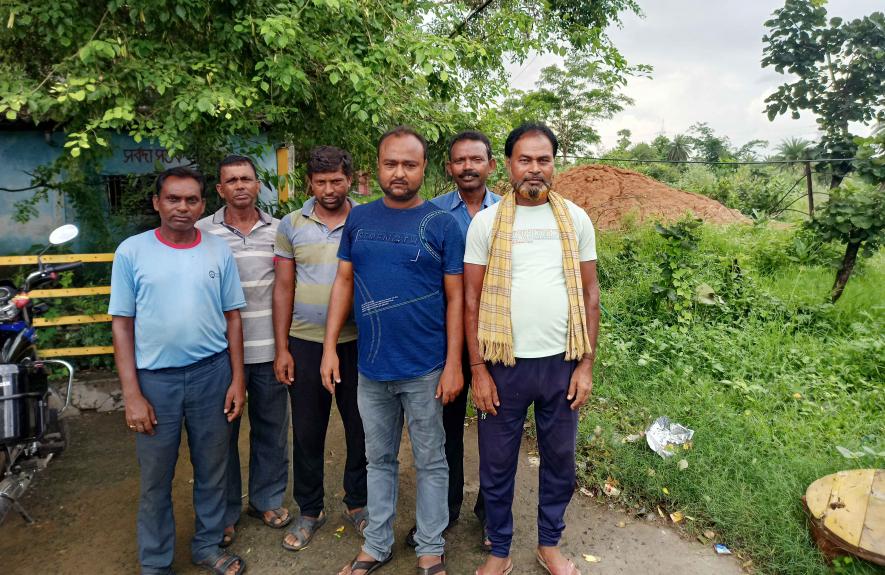
Contractual workers of Kalidaspur coal mine.
This writer met contract labourers Saifuddin Khan and Gour Kora in the attendance room. They looked disappointed and said they had come in the morning for work but did not get any job. They said they had been doing this for several days but were not getting to work. At the beginning of this year, they got work only for a few days.
“If we work, we get a daily wage of Rs 700, which is lower than the government-prescribed wages for mining. Rs 79 is deducted for the provident fund (PF) on the day of work. We have worked since 2014 and never got work for the whole month. The management has not given us any up-to-date status of our PF accounts. When asked, the personnel officer of Kalidaspur Mine told us to go to the PF office in Asansol and stage a dharna. We went there, too, but nothing worked. We are living our days in extreme uncertainty," said Saifuddin Khan.
Living conditions of coal workers and families
About 700 people live in the quarters in this mining area. Most of the quarters are surrounded by garbage. ECL never cleans up this mess, alleged some workers. The residents complained that mosquitoes and snakes had increased. The roofs of several quarters had cracked, but no repairs had been done. But, the biggest problem is water. Several years ago, a pipeline water system was established here at the initiative of Basudeb Acharia, a former CPI(M) Member of Parliament from Bankura. Still, people do not get enough drinking water.
Residents Babli Chakroborty, Sumana Gupta, and Ramrup Shig said that bathing water is supplied from the mine and is black in colour. Several people complained of skin diseases.
Also, there is no school here and the children of workers' families have to study far away. There is no hospital, only a dispensary for first aid. If workers and their family members fall sick, they go 25 km away to the ECL area hospital in Satgram. The 4-km metal road from the Kalidaspur bus stand to the mine is also in a dangerous condition. Accidents take place quite often. Many workers used this road, but it is badly in need of repairs.
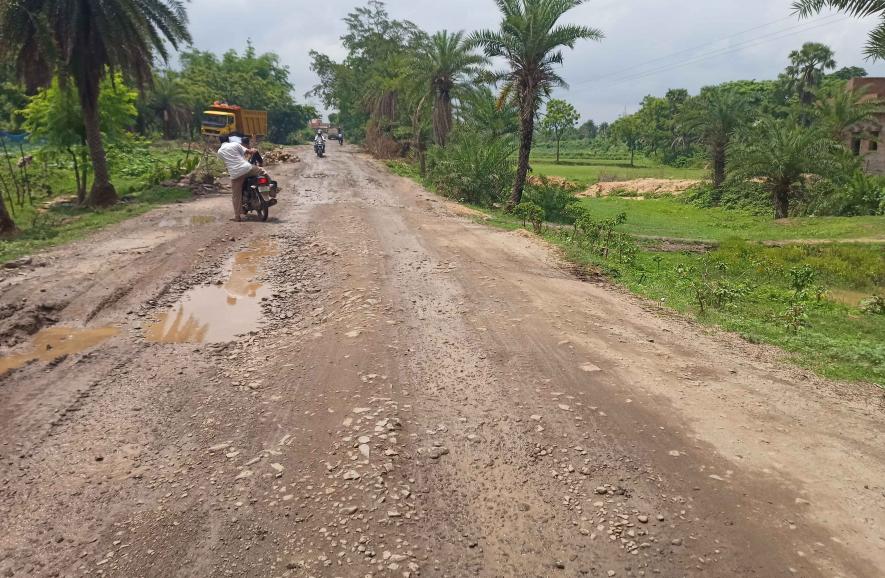
Condition of the 4km metal road from Kalidaspur bus stand to the mine area.
When asked to respond to several complaints raised by workers, Abhishek Thakur, general manager of Kalidaspur coal mine, said it was impossible to provide ventilation in all places inside the mine. He also said there was no need to fill sand as coal pillars were not being cut now. He did not give any answer about the rescue team. Regarding the black water for bathing, Thakur said the water comes directly from the mine, so it will remain black. He had no answer to why the water filter installed at a cost of Rs 16 lakh, was not working.
Chiranjit Ray, secretary of CITU's Koliyari Majdur Sabha of India, said: "We have held various protests here with several demands, including the safety of the workers, and the fight is going on. The management is only making promises.”
The writer covers the Jungle Mahal region for Ganashakti newspaper in West Bengal. The views are personal.
Get the latest reports & analysis with people's perspective on Protests, movements & deep analytical videos, discussions of the current affairs in your Telegram app. Subscribe to NewsClick's Telegram channel & get Real-Time updates on stories, as they get published on our website.









